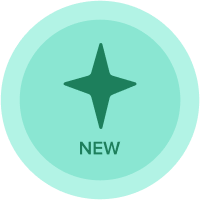Plan IQ historical data in data collection - should it only contain [target data]?
Hi
I'm curious about how to set the data collection - historical data.
I want to make a prediction about revenue, and have some historical data.
but I also have other historical data, which is revenue and promotion, and those data is related to the revenue data (this is known from other analysis)
but I cannot make any related data in my data collection because I cannot provide the revenue and promotion data of the future timescale (I have only past data of those)
in this case, can I put those data in the historical data (as a different line item) to make more precise forecast on revenue? Or should I limit the historical data only for the target data for prediction?
thank you
Kim
Best Answers
-
@KimJeongjun
The complexity of the possibilities your questions makes it difficult to give you a straight answer.
In short, I think you are going to have to do multiple different things to give you a better overall result (and do some sideline math).
With regards to getting historic data to function with future data, you can do several different things. If you are looking for seasonality, you can combine the information you have. Since they are related; do a factor and pull the values together, so you are doing a 'apples to apples' comparison with the cavoite that you are quite literally assuming that the seasonality, is repeatable, and impacts are going to be the same for the unknown months. You can also, if, you are trying to get information to be comparison in an apples to apples, do a suppression of the future data, and have the most recent data be the end of year, and pushbackwards through time. This should give you a better result, as you are working only knowns. Once you have the results, you can extrapolate using different techniques (regression analysis, upper/lower/average bounding, iterative equations (snow-globe), etc. to get the expected results, or apply the final factor given the different variables.
You can also use offsets/post to shift the data forward or back 12 months (or more/less) for comparative results.
Eg (With everything set for CY Time (or PY Time)):
Line Item 1: PY ActualsLine Item 2: PY Forecast
Line Item 3: CY Actuals+ForecastLine Item 4: CY Forecast
Line Item 5: Plan
Line Item 6: CY PromotionLine Item 7: PY Promotion
Then you can run it through and you will see how effective your PY promotions are, etc. etc. This will obscure seasonality and other similar factors(or make them obvious to the **bleep** eye). You will DEFINITELY have some results that are unclear, using either or both techniques.
There is more to it, but again, you have multiple questions, and most require complex answers. I am obviously ignoring certain features (COVID) and simplifying. I hope this makes sense and gives some direction on some statistical methods to leverage, which can be pushed into Plan IQ, when looking at different methods.
1 -
Hello @KimJeongjun
Assuming Revenue forecast is what you predict using your historical revenue (Actuals)
Promotions is the related data which has correlation with revenue
If you do not have promotions for the future, you planIQ model will produce the baseline revenue without including any promotional uplift for the future.
Hope it answers your question.
Thanks
Arun
0





